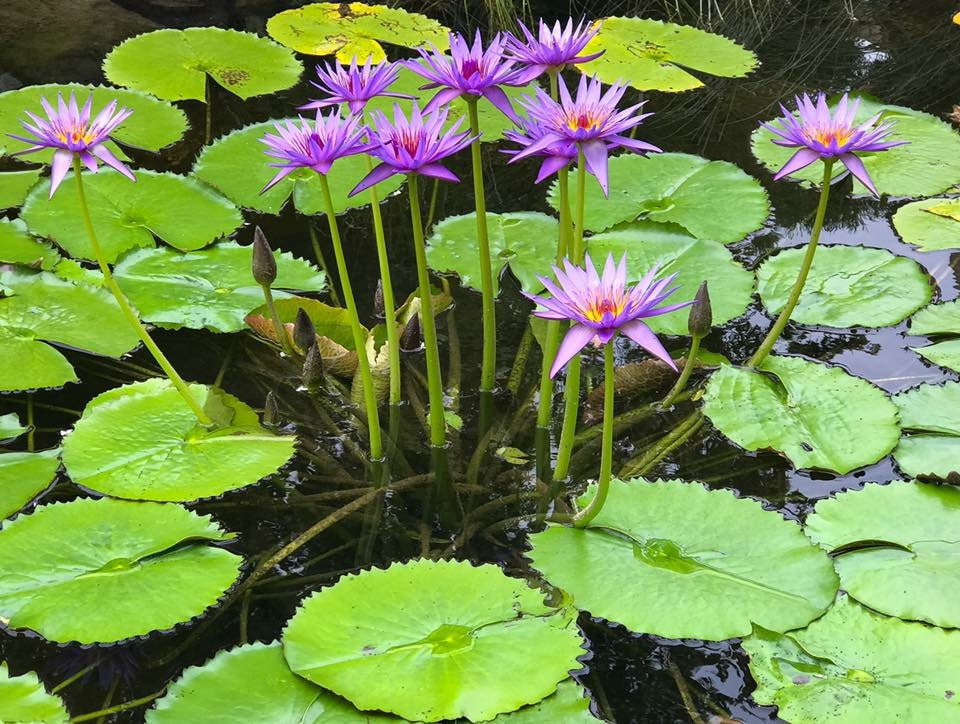Graceful water lilies are synonymous with idyllic ponds and lakes. Their large round leaves and showy blooms seem to epitomize the tranquility of water gardening. But are these aquatic plants truly good for your pond?
Water lilies offer both benefits and drawbacks. By understanding their pros and cons, you can make informed choices about including them in your pond design.
What are Water Lilies?
Water lilies or waterlilies (Nymphaea species) are floating-leaved perennial aquatic plants They are native to temperate and tropical regions worldwide.
There are around 70 species, with hundreds of cultivated varieties. Waterlilies spread via rhizomes under the soil and can rapidly cover ponds if not contained.
Popular types include:
- Hardy water lilies – Tolerate cooler climates and bloom spring to fall.
- Tropical water lilies – Require warm water and bloom summer into fall.
- Lotus (Nelumbo species) – Tropical water lilies with large leaves that rise above water.
The Pros: Benefits of Water Lilies for Ponds
When properly managed. waterlilies offer numerous advantages for backyard ponds
1. Provide Shelter and Shade
The broad floating leaves give shade and shelter beneath them. Areas under lily pads allow fish to escape intense sun and aerial predators.
Ponds with at least 60% lily cover are ideal, This protects fish while permitting enough light for aquatic plants
2. Regulate Water Temperature
Through transpiration, lily leaves cool pond water. This stabilization prevents dangerous temperature fluctuations that can stress or kill fish.
3. Harbor Beneficial Insects
Many aquatic insects use water lilies as food and habitat. Damselflies, dragonflies, water striders, and others reside among the leaves and stalks.
These creatures eat mosquito larvae, controlling nuisance biters. Damselflies also feast on midges that bother fish.
4. Provide Spawning Habitat
The tangled roots around lily rhizomes are prime spawning sites for fish like sunfish and bass. Young fry shelter there to avoid predators.
5. Remove Excess Nutrients
Lilypads absorb phosphorus, nitrogen and other nutrients from pond water. This helps prevent excessive algae growth fueled by high nutrients.
6. Add Natural Beauty
Let’s not overlook aesthetics! Lush lily foliage and colorful blooms beautify ponds. Their presence creates a quintessential water garden look.
The Cons: Drawbacks of Water Lilies for Ponds
Unfortunately, water lilies also have some potential disadvantages:
1. Fast Spreading Growth
Given ideal conditions, lilies multiply rapidly via rhizome extension. They can choke out ponds in just a few years if not contained.
In small ponds under 500 sq ft, lilies often overtake the entire surface. They block light and cause underwater dieback.
2. Excessive Shading
Too many lily pads cause excessive shading, preventing light from reaching submerged plants. Loss of aquatics allows algae to proliferate.
Ideally, 60% of the water surface should be open for sunlight penetration.
3. Decrease Dissolved Oxygen
Thick lily cover prevents oxygenation from surface wind mixing. Stagnation and higher water temperatures also reduce oxygen levels. Low oxygen stresses pond fish.
4. Accumulate Organic Debris
As lily leaves age and decay, they sink and accumulate as muck. This debris decomposition robs oxygen from water. Aeration is needed to counteract this.
5. Harbor Snails
Lily stalks and leaves invite pesky pond snails. These pests consume plants, spread parasites, and dirty water with feces. Copper treatments may be needed for control.
6. Require Maintenance
Containing lilies demands regular pruning, removal, and division. Leaves must be thinned before they carpet the entire surface. It’s continual maintenance.
Tips for Growing Lilies Successfully
When cultured properly, water lilies bring more benefits than problems to backyard ponds. Here are tips for success:
-
Site lilies in partial sun to balance growth and blooms.
-
Use aquatic plant barriers or pots to contain spread.
-
Start with fewer lilies than you think you need. They multiply fast!
-
Thin and divide lilies often to prevent surface crowding.
-
Prune older leaves and deadhead spent flowers frequently.
-
Maintain clear areas for light and surface gas exchange.
-
Use circulation, fountains, or aeration to prevent stagnation under lilies.
-
Control snails with copper treatments if they become problematic.
Water lilies are double-edged swords in ponds, bringing both pros and cons. But their elegance makes them irresistible additions. With smart management focused on balance, you can maximize their beauty and minimize their drawbacks. A pond dotted with controlled lilies creates a serene refuge and healthy habitat.

Water Lilies For Your Pond
FAQ
What are the disadvantages of water lilies?
Do water lilies clean ponds?
Do water lilies oxygenate a pond?
Can you have too many water lilies in a pond?
- A Complete Guide to Caring for Yuki Cherry Blossom Shrub - January 23, 2025
- Identifying Red Hot Poker Seeds: What to Look For When Harvesting Torch Lily Pods - January 23, 2025
- A Complete Guide to Harvesting Evening Primrose Seeds - January 23, 2025
